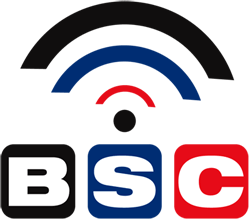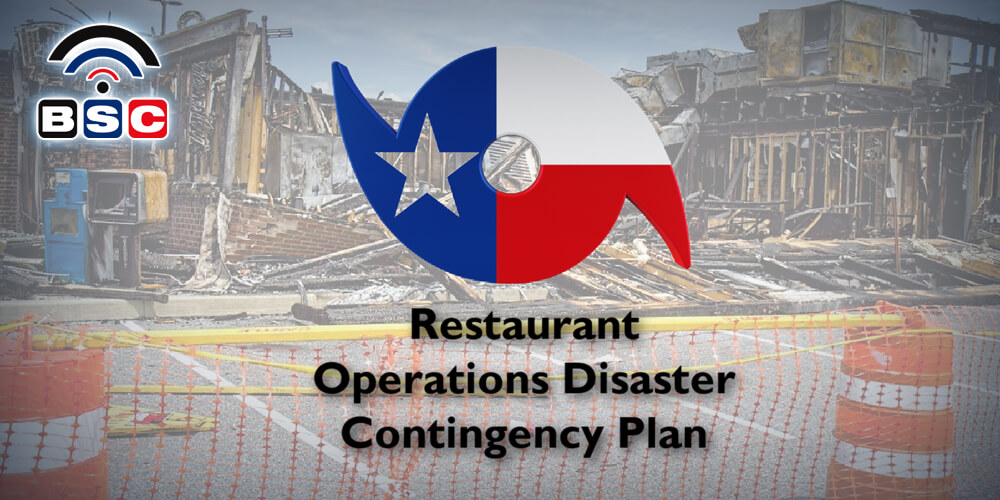Texas restaurant operators must have a unique protocol that encompasses a disaster contingency plan as their operations directly affects public health. We learned through the recent hard freeze in Texas, and multiple hurricanes with floodwaters that being prepared with an operations disaster contingency plan is the key to survival.
The Statistics
According to the U.S. National Archives and Records Administration, only 43% of businesses struck by a disaster resume operations afterward. Of that 43% that resumed operations, 29% of the companies fail within two years. (Business.com, 2020) Those are daunting statistics.
Restaurant operators can’t foresee every potential emergency; however, preparing for both everyday and extreme situations will allow resiliency and provide a path of recovery to bounce back.
It is pretty straight forward; what can you afford to lose? How will a temporary closure affect your staff? Restaurant owners need a comprehensive insurance policy in addition to a robust contingency plan. We are here to help you with getting your plan started. Here’s what you should keep in mind.
Contingency Plan – A Written List of Action
Having a contingency plan can save both your business and potentially the lives of the people associated with it.
It’s crucial that your contingency plan is documented and every staff working at your restaurant knows how to access it in case of an emergency. Business-related operations will differ from one restaurant to another, so identify risks and prioritize them based on your needs.
Broken equipment is a showstopper. High use equipment that goes down is a disaster. Do you have back-up funds available for repairs or replacement? Who do you call when equipment needs repair? Small independent operators are much more vulnerable than large franchise restaurants. Stay ahead of the risk and know where you have weaknesses that can lead to loss.
Operational risks like broken communication equipment, outdated POS systems that fail, or spoiled food are just as critical to include in your contingency plan. You’ve got to address each important piece of operations equipment with a plan.
For every business, The Centers for Disease Control and Prevention has provided an Emergency Action Plan template. You can customize it for your specific critical circumstances, and operational needs.
Communication
Communication is essential – for both internal staff and external customers. In an extreme situation like a fire hazard, no water supply, or natural calamities like floods, tornados, hurricanes, etc., means your restaurant will most likely will offer limited service or be closed temporarily. How you handle things is a direct reflection of your service commitment to customers as well as employees.
How timely the initial communication is handled with empathy will help all those working at your restaurant. Prepare an emergency contacts list of managers, regional and corporate offices, local state authorities, police, fire department, electric department, water & sewer agencies, external vendors and equipment rentals, daily utilities, and technicians, for your communication plan.
To communicate with employees and customers, you can initiate a call, group video call or chat, send official emails, or tap social media. Your Google business profile also allows you to specify special hours during emergencies. Many businesses rely on social media channels such as Twitter to keep a public, transparent and open line of communication. Cell phones often stay connected to the internet despite a power outage or when landline phones are down. If you haven’t set up a social media business page, it’s a really good idea. People want to know what is happening and what to expect.
Power Outage Back Up
A power outage can occur in any restaurant and can cause severe damage to prepared and stored food. One way to keep your restaurant backed up is to install an electric generator. A generator can keep critical systems up such as your POS or refrigeration units temporarily.
The plan should include all aspects of business operations that need electricity – food, billing, electric equipment, communication equipment, etc. An emergency menu that requires minimal preparation, and a battery-operated or smartphone card swipe machine for payments comes in handy in extreme situations. Along with it, the entire staff’s internal training on their roles and responsibilities during and after the outage is a must.
Food Safety
With regards to food safety, follow these steps during the power outage:
- 1. Keep the refrigerator and freezer doors closed at all times to maintain the cold temperature.
- The refrigerator will keep food cold for about 4 hours if it is unopened.
- A full freezer will keep the temperature for about 48 hours (24 hours if it is half full) if the door remains closed.
- 2. Buy dry or block ice to keep the refrigerator chilled if the outage is for a more extended period. Fifty pounds of dry ice can hold an 18 cubic foot, fully stocked freezer cold for two days. Be careful while using dry ice, as it can produce hazardous carbon dioxide gas in closed areas.
- 3. If frozen meat, poultry, fish, eggs, or refrigerated items are used for cooking, check that they are thoroughly cooked at a required temperature to kill foodborne bacteria present in them.
(Center for Food Safety and Applied Nutrition, 2020)
Food Spoilage
Food gets affected first during a power outage. TCS (time/temperature control for safety) foods will spoil if they are not kept within a certain temperature range.
Keep these suggestions in mind to avoid food spoilage:
- 1. Food items with fluctuating temperatures can quickly get spoiled and become contaminated with harmful bacteria. To avoid putting people at risk of foodborne illness, monitor and document product temperatures.
- 2. During a power outage, instantly create ice baths for TCS Foods: eggs, meats, seafood, milk, cheese, prepared foods, and cooked vegetables.
- 3. Use a calibrated thermometer to test the food temperature and discard any TCS food that’s stored above 41° F for more than 2 hours.
- 4. Once the power supply is back, check the food quality. If any food item looks off-color or smells bad, discard it immediately.
- 5. Avoid serious illness by not tasting or serving a suspect food item.
(QSR, 2018)
Water Supply
Restaurants need a clean water supply for just about everything – from preparing food to maintaining hygiene at the outlet. Take these steps if water service is interrupted or becomes contaminated.
- 1. Use bottled water drinking and cooking if the freshwater is contaminated or boil water advisory is in effect.
- 2. Use boiled water or a portable water source for all handwashing purposes.
- 3. Use the dishwasher with water at min 180° F or hotter rinse water. If handwashing, use a three-compartment sink to wash wares with boiled water.
- 4. Use disposable dishes, cups, and cutlery if you don’t have boiled water or water at an adequate temperature.
- 5. Do not use any ice from ice machines or soda fountains if the water is contaminated. When the water service is restored and before using the device, discard the first cycle of ice, clean and sanitize ice bins after flushing the ice machine system.
- 6. Do not reopen food-service facilities until there is a potable water source for hand washing, cleaning and sanitizing, and cooking.
- 7. Provide toilet facilities to the employees working during the outage.
(QSR, 2018)
Be Prepared and Continue Innovating
Tough times are hard on everyone. It takes time to get back to usual business operations.
And remember, Business Sound & Communications has served Houston for over 30 years. We know drive-thru and quick serve restaurants and the challenges they face during operational emergencies. We call Houston home and hope you’ll call us when you are facing a reopening after an operational disaster. We’ve got your drive-thru communications devices, POS, menu boards, timers and overhead speaker systems covered when you need them most with expert installation, service and maintenance.
Works Cited
Business.com, M. (2020, March 16). 5 steps for your Restaurant’s disaster PREPAREDNESS PLAN. Retrieved February 25, 2021, from https://www.business.com/articles/five-steps-for-restaurant-preparedness-plan/.
Center for Food Safety and Applied Nutrition, F. (2020, November 2). Food and water safety during power outages and floods. Retrieved February 25, 2021, from https://www.fda.gov/food/buy-store-serve-safe-food/food-and-water-safety-during-power-outages-and-floods.
QSR, O. (2018, September). Restaurant hurricane preparation and Recovery Tips. Retrieved February 25, 2021, from https://www.qsrmagazine.com/outside-insights/restaurant-hurricane-preparation-and-recovery-tips.


